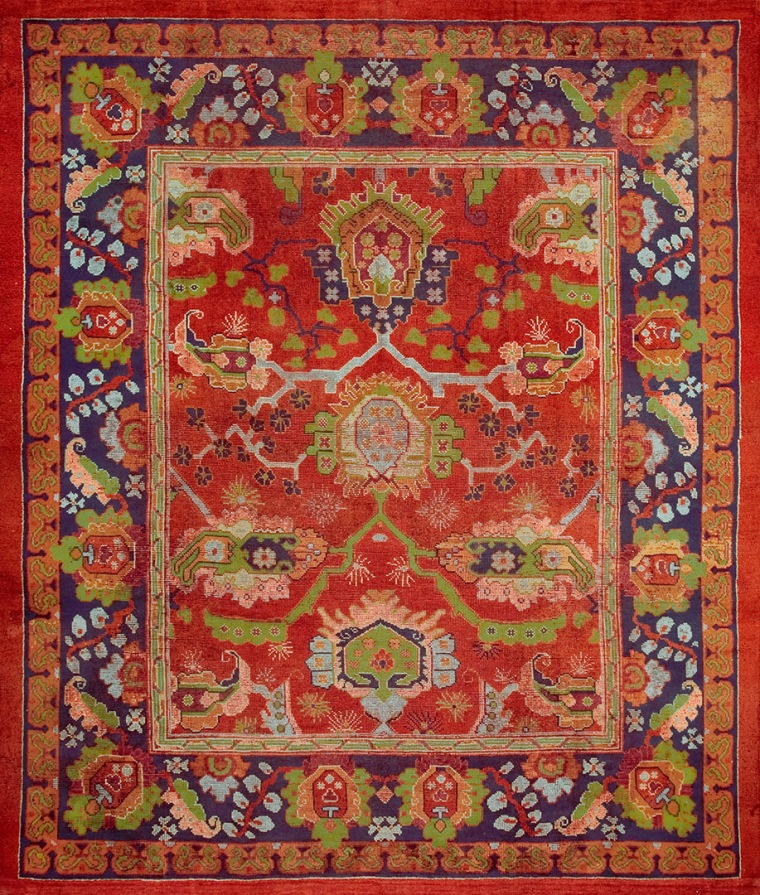

Clash of the Carpets
Battle of the bands? How about a combat of the carpets? Who is original and who is derivative? Who copied whom and who inspired whom? Which came first? We date the Turkish Oushak 19239 as c. 1880 or somewhat later, while the Irish Donegal 18754 was woven right around 1900. Oushaks employing selected Persian design motives were essentially introduced by the predecessors of Oriental Carpet Manufacturers (OCM) when they took over the production of export oriented workshops, certainly in the late 19th century. Irish production seems to have begun around 1898, Oushaks were certainly available as prototypes. Oushak carpets, actually woven mostly in Smyrna on the west coast of Turkey, were simplified in design, stripped of extraneous ornament, to facilitate quicker, cheaper production. Wool in both Ireland and Ottoman Turkey was abundant and labor was cheap. Coarse carpets were easy to design, easy to weave and could be priced reasonably.
The design vocabulary certainly overlaps: bold palmettes, flowering racemes in field and border, angular arabesque segments. If anything, the Donegal carpet is graphically stronger than its Turkish compere. Both the designers of each have eliminated extraneous ornament and enlarged what they retained. Less was certainly more. The Donegal carpet employs chunky Persian booths on the arabesques while the Oushak borrows equally Iranian weeping willows. The palette of the Donegal is wider, with ochre, grass green, dark blue and ivory, while the Oushak hits hard with a striking gold border. Interestingly, the outer flame-like narrow border has been cleverly adopted and adapted from the peripheries of the medallions on 17th century Oushak carpets made for export to Europe.
Could the places of origin be reversed? Red dominates in both carpets, a warm and expansive red.
So, which rug is better? Put them in adjacent rooms. Their folly, directly appealing styles easily mesh. Both types borrow and the only question is whether you prefer one borrowing to another. Both work with modern furniture, especially those pieces where the wood itself is given prominence , a George Nakashima table, perhaps.